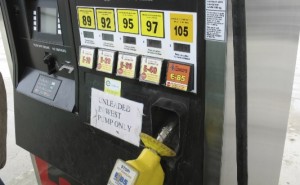Our nation needs to transition to hydrous ethanol as the primary renewable transportation fuel, writes Brian J. Donovan with Renergie, Inc. Many of you may be thinking that this is no different than what many people are proposing – the move to ethanol- but Donovan is proposing the use of hydrous ethanol versus anhydrous ethanol. Simply put, anhydrous ethanol has a purity of at least 99 percent and meets the standard specification for ethanol used as a motor fuel. Hydrous (or wet) ethanol can be produced by simple distillation (think in your backyard) without the dehydration step (which then produces anhydrous ethanol) and is between 93-96 percent ethanol and 7-4 percent water.
 In February, 2009, the U.S. EPA granted Renergie a first-of-its-kind waiver for the purpose of testing hydrous E10, E20, E30 & E85 ethanol blends in non-flex-fuel vehicles and flex-fuel vehicles in the State of Louisiana. Under this test program, Renergie will use variable blending pumps, not splash blending, to precisely dispense hydrous ethanol blends of E10, E20, E30, and E85 to test vehicles for the purpose of testing for blend optimization with respect to fuel economy, engine emissions, and vehicle drivability.
In February, 2009, the U.S. EPA granted Renergie a first-of-its-kind waiver for the purpose of testing hydrous E10, E20, E30 & E85 ethanol blends in non-flex-fuel vehicles and flex-fuel vehicles in the State of Louisiana. Under this test program, Renergie will use variable blending pumps, not splash blending, to precisely dispense hydrous ethanol blends of E10, E20, E30, and E85 to test vehicles for the purpose of testing for blend optimization with respect to fuel economy, engine emissions, and vehicle drivability.
Initial tests conducted in Europe have confirmed that hydrous ethanol can be blended effectively with gasoline without phase separation or other problems. But why is this important you ask? According to Donovan, hydrous ethanol may be better suited for mid-level blends used in FFVs and non-FFVs.
He writes that due to emissions and durability testing requirements, ethanol producers are having difficulty with assessing the economic and environmental impacts of midlevel anhydrous ethanol blends on current auto engines in order to increase blending rates and the RFS. In contrast to higher percentage anhydrous ethanol blends, HE15 and higher blends can be utilized in legacy vehicles (existing auto engines) as well as FFVs. Once parallel testing has been conducted for midlevel and E85/HE85 anhydrous and hydrous ethanol blends, further fuel efficiency and emissions testing may not be necessary.
Should that be the case, then this is good news for both consumers and the ethanol industry – consumers get more choice at the pump and the ethanol industry has a larger home for its product.

